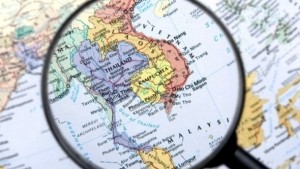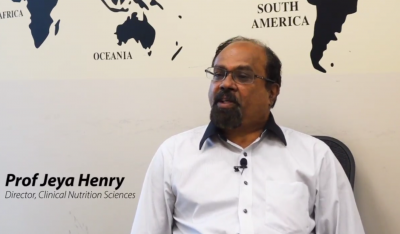Dateline Southeast Asia
One-third of Singapore's young face diabetes, rate to double by 2030

Diabetes rates rose from 8.6% in Singaporean adults in 1992 to 11.3% in 2010, and are expected to have increased further to 12.9% once last year’s figures are collated.
Based on current projections, 34% of young people aged 24-35 this year can expect to become diabetic by the time they are 65, according to Chia Kee Seng, dean of the Saw Swee Hock School of Public Health.
Rising rates of obesity in those under 40 are due to "a big drop in physical activity" when people start working, Professor Chia said.
"It is important for those in their 20s to recognise that the dramatic lifestyle changes as they enter working life will have very significant health impact when they are in their 60s," he added.
Already having one of the highest instances of diabetes in the developed world, Singapore—along with the five other biggest economies of Asean: Indonesia, Malaysia, the Philippines, Thailand and Vietnam—is expected to have seen a doubling in the prevalence of diabetes between 2000 and 2030, according to World Health Organisation figures.
Moreover, from an analysis of the WHO statistics conducted by the Economist Intelligence Unit, Singapore has already experienced a 24% change in the number of obese adults during the period between 2010 and 2014, though this number was dwarfed by a 33% change in both Indonesia and Malaysia, and a 38% surge in Vietnam over the same period.
Overweight and obesity increases an individual’s risk of non-communicable diseases such as heart disease, stroke, type-2 diabetes and some cancers.Research suggests that such diseases now account for 60% of all deaths in Southeast Asia.
The EIU’s obesity findings were highlighted in a preliminary report on weight and its economic impact commissioned by the Asia Roundtable on Food Innovation for Improved Nutrition and the Health Promotion Board of Singapore.
The International Diabetes Federation estimates that there are 387m diabetics globally, and just over 500,000 adults with the disease in Singapore in 2014. Its prevalence in the country has grown from 4.7% about 30 years ago to almost 13% of adults.
This figure will grow exponentially without intervention, according to Jeyakumar Henry, director of the Clinical Nutrition Research Centre at A*Star, Singapore’s public sector agency for economic-orientated research.
“The prevalence of diabetes is increasing fast and it’s affecting younger people. Asian diabetic patients contribute to more than 60% of the world’s diabetic population, and four of the top 10 countries with the most cases of diabetes are in Asia,” said Professor Henry, referring to China, India, Indonesia and Japan.
“Diabetes is more common among men than women, and Indians are most likely to have diabetes, followed by Malays and Chinese. The largest number of people with diabetes are aged between 40 and 59, compared to Europe, where most diabetics are over 60.”
Mostly composed of white rice, Asian diets are very different to those in other parts of the world, said Professor Henry, who has found that carbohydrates account for up to 70% of calories in Asian diets, compared to just 42% in the UK.
He has also been working on how Asian body compositions are different to those in the West.
“By focusing primarily on the Asian phenotype, we understand how metabolic health affects us in Asia. Most importantly, we look at foods and food ingredients that are locally available, which can be used to reduce the risk of obesity and non-communicable diseases like type-2 diabetes,” he said.
While the likelihood that rising obesity in the so-called “Asean Six” will lead to an increase in non-communicable diseases, Simon Baptist, chief economist with the EIU, believes that more evidence is needed on the economic impact of obesity in the region and, importantly, how regulators, the food industry and governments should respond.
“The current prevalence of obesity in many Asean countries is low by global standards—though with some exceptions for childhood obesity—but the rate is rising fast and the large populations of some countries mean that they have some of the largest numbers of overweight and obese people,” Dr Baptist said.
The final EIU report, which is expected to be completed at the end of October, will indicate the scale of both the direct and indirect economics costs of obesity, as well as assess policy interventions.
More stories from Southeast Asia…
Thailand looks to neighbours for surge in food trade
Thai food market analysts are predicting bright prospects for food exports to neighbouring countries this year on the back of their growing economies.
According to the National Food Institute, an independent research body under the Ministry of Industry, increasing purchasing power from Cambodia, Laos, Myanmar and Vietnam will benefit Thai exporters.
The institute based its production on an economic assessment conducted by the International Monetary Fund on these countries that predicted that their GDP growth would rise this year.
Thailand has relied mainly on its neighbours for food and especially beverage export growth. Fruit and vegetable juices and milk products have seen healthy demand in these countries, with the trend expected to continue this year amid rising demand.
Thailand’s high quality manufacturing and strict standards have also boosted the popularity of its products among its neighbouring markets, the institute added.
For small and medium-sized enterprises looking to export their goods to these countries, the institute suggested they experiment with smaller markets along the borders before hitting bigger ones in major cities.
C&C signs Magners distribution deal with San Miguel Marketing Thailand
In a bid to strengthen its sales of Magners in Thailand, Dublin-based C&C Group has announced a strategic distribution agreement with San Miguel Marketing Thailand.
San Miguel will work closely with C&C, a leading manufacturer and distributor of branded cider, beer, wine and soft drinks, to expand its activation of the cider brand in Thailand, one of its biggest markets in Asia.
San Miguel currently manufactures a number of its own brands at its brewery in Pathum Thani and distributes these across Thailand.
Joris Brams, managing director of C&C’s international division, said: “We have the international market firmly in our sights.
“This collaboration allows us to bolster both our sales and brand exposure, and drive forward our international expansion programme in a significant way.”
Carlos Berba, his counterpart at San Miguel, called the deal “another milestone for our operations” in Thailand.
“The addition of Magners Cider truly complements our portfolio that currently includes San Miguel Pale Pilsen, San Mig Light, San Miguel Cerveza Negra and Kirin Ichiban Shibori.”














